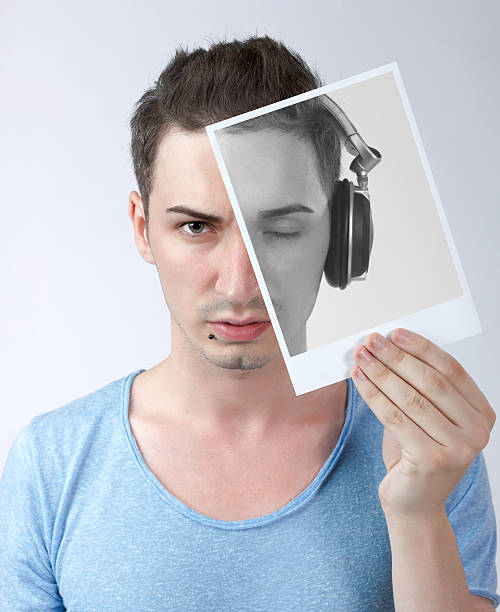What is portrait photography?
Portrait photography focuses on capturing the essence, personality, and attitude of an individual using backgrounds, lighting, and posing.
Although this may seem simple, portrait photography is one of the most difficult forms of photography. It is important to get a photograph that looks natural and allows the subject to shine through.
The equipment used by portrait photographers doesn’t matter as long as they can capture the subject’s personality. It is always helpful to have the latest equipment, but it is not necessary.
What is a portrait photographer?
Portrait photographers are responsible for photographing their subjects. Portrait photographers often offer tips for posing to their subjects. They edit and then print the photos for their clients.
Localization
The common responsibility of a portrait photographer is to locate a location that will be used as the background for the portrait photograph.
Photographers can either choose to take their portrait in a studio or to locate a location from outside the studio using location scouting.
The most popular option for portrait photography is to use a simple background in a studio setting. This background is great for traditional portrait photographers as it allows them to focus on their subjects and remove distracting background elements.
Another option is to locate a location that’s not in a studio.
Photographing outside of a studio allows the photographer to add creative elements that help capture the personality and character of the subject. This gives the viewer a better understanding of the person in the photograph.
No matter where the photographer is located, their main focus should be on the subject and not the background.
Lighting
Lighting a portrait is an important aspect of portrait photography. Different lighting settings can result in a completely different mood or attitude.
Portrait photographers don’t rely on the built-in flash of their cameras. Instead, they use natural light or studio lighting and reflectors.
Photographers who are shooting in a studio may use combination reflectors and out-of-camera lights to illuminate models.
They may choose to take a portrait shot with natural lighting if the studio lighting is unavailable or not their style. If this is the case, the portrait photographer will rely on natural sunlight.
This requires a greater understanding of daylight timing and body position in order to create effective natural light portrait photography. If done correctly, it can produce stunning portraits.
What is a portrait?
When the subject, background, lighting, emotion, and mood can create a feeling of connection between the viewer’s eyes and the photograph, it is called a portrait.
Although a candid photo is not considered to be a portrait, candid portraits are often the best.
Why is portrait photography so important?
Portrait photography is important for many reasons, and these reasons can vary from one person to the next.
Portrait photographs can be used for historical preservation, personal branding, or personal enjoyment.
Portrait photography is important for many reasons.
It can be difficult to explain the importance of art like other forms. These reasons may be sufficient to answer this question. Portrait photography is perhaps a universal need because of the emotional connection it can make with the viewer.
Each person has the ability to feel emotions and feelings through a portrait. Only when we can see that through a portrait can we truly connect with those feelings.
Portrait photography is so important.
Portrait photography is essential for portrait photographers to share their work with the public and discover a connection between emotion and their subject.
Photographers may be enjoying portrait photography as a hobby, or they could be family members of clients whose portraits were taken.
You have to find a way to satisfy both your clients and your own self. Portrait photographers have a lot to choose from and how their clients feel about their portraits.
What are the various types of portrait photography?
Although there are many sub-genres to portrait photography, they all share the same goal: to capture people and their personalities.
- Traditional portraits
Traditional portraits often feature the subject in a posed pose looking directly at the camera. These portraits are typically shot in a studio using studio lighting and a background prepared.
These portraits are typically cropped at the shoulders and head. They are often what people associate with portraits.
- Lifestyle portraits
Lifestyle portraits are intended to capture people in their daily environment.
Professional lifestyle portrait photographers often “direct” rather than “posing” in order to create lifestyle portraits that are more candid and effective.
- Environmental portraits
An environmental portrait focuses on the environment, while the subject remains the focus of the photo.
These portraits are usually taken in a place and environment that is meaningful to the subject.
The fact that environmental portraits can be more “posed” than lifestyle portraits makes them slightly different.
- Street portraits
Street portraits are often spontaneous and unplanned. Street portraits are often candid and spontaneous. However, there is some planning involved in the approach. The poses or actions of the subject are usually not planned.
- Beauty portraits
Beauty/glamour portraits are often focused on the beauty of the subject, often with professional makeup and wardrobe planning.
- Fine art portraits
It is often debated whether fine art portraits should be considered a subgenre in portrait photography.
Fine art portrait photographers often draw inspiration from other types of artworks, such as paintings.
These portraits can be creative and allow the photographer to express their creativity.
- Family/group portraits
Multiple people can be involved in family and group portraits.
These portraits are often taken in groups and involve interactions between members to make candid photos.
Many family/group portrait photographers use prompts to get their subjects to perform a particular scenario. This often produces very candid results.
What are your thoughts?
We have now covered the basics of a portrait photo. I would love to hear your thoughts!
Do you have any new knowledge about portrait photography? Is there anything you can add to the conversation about portrait photography?



